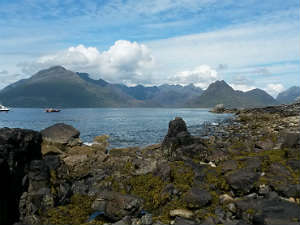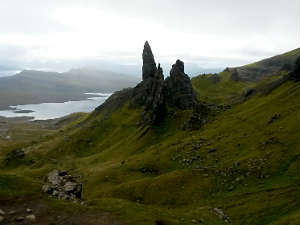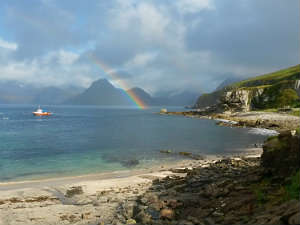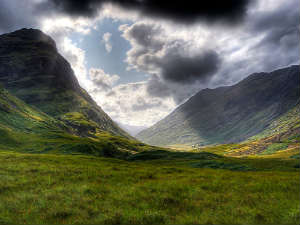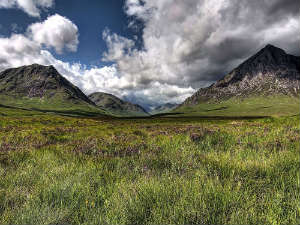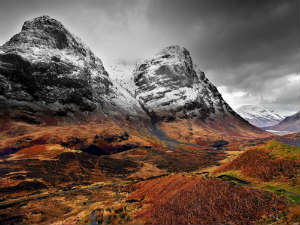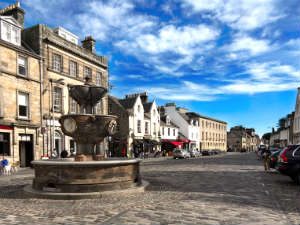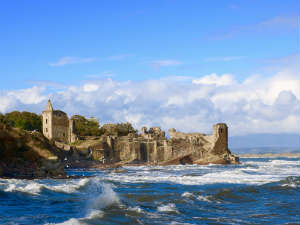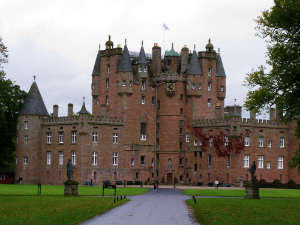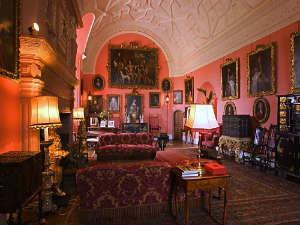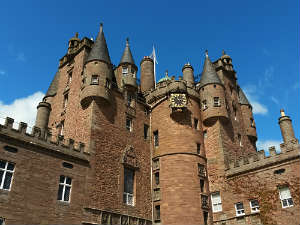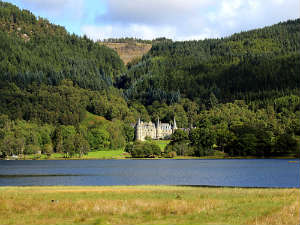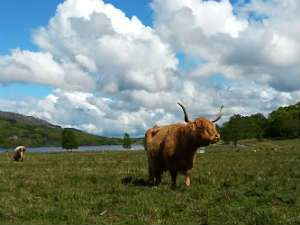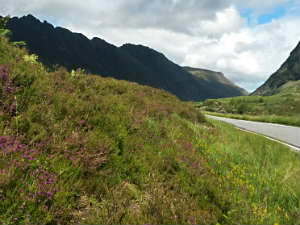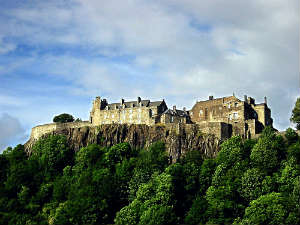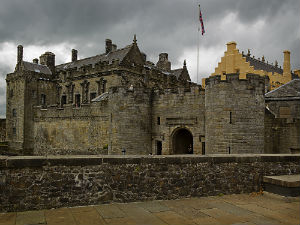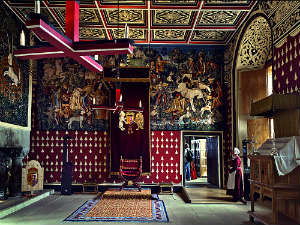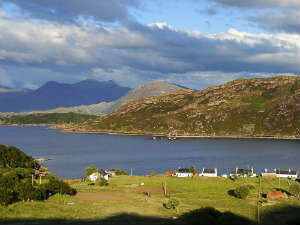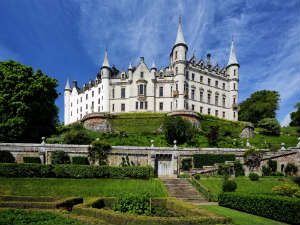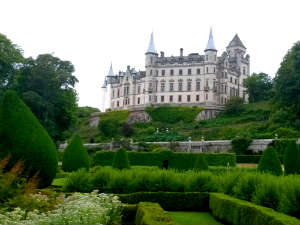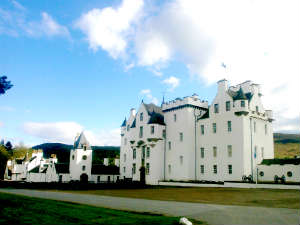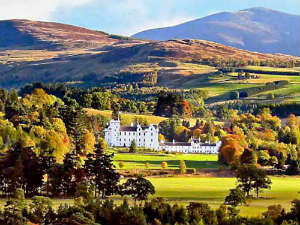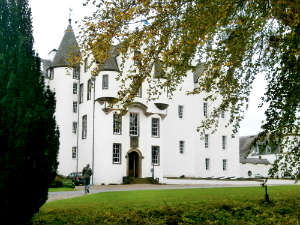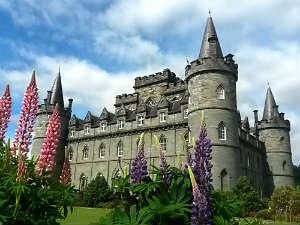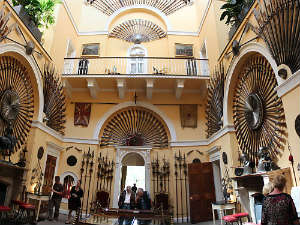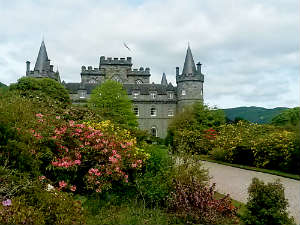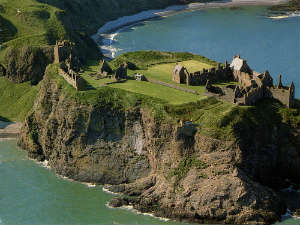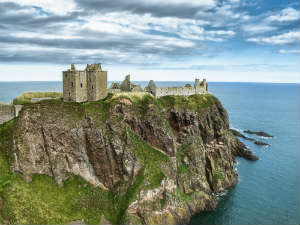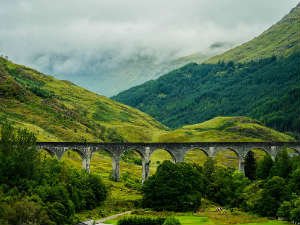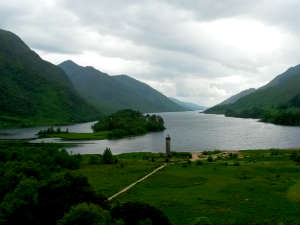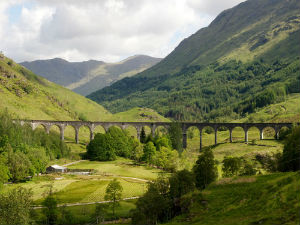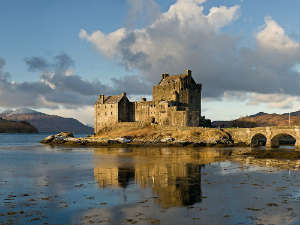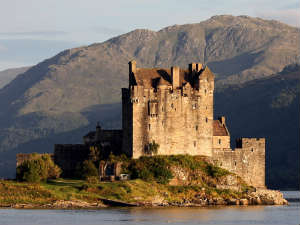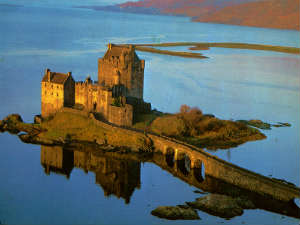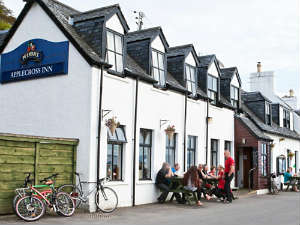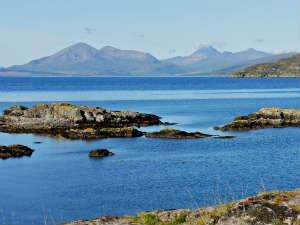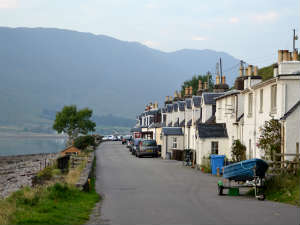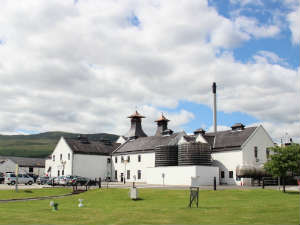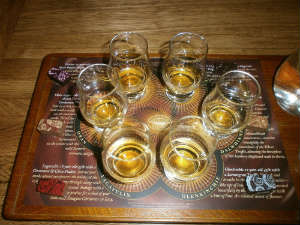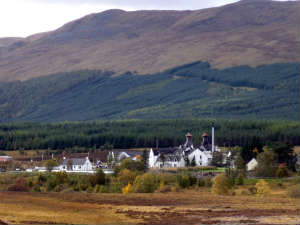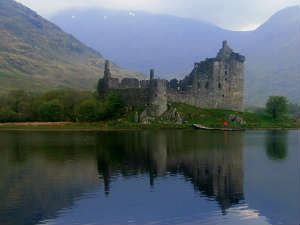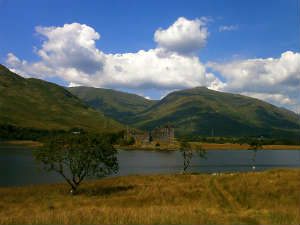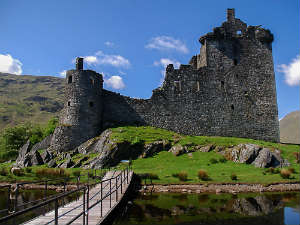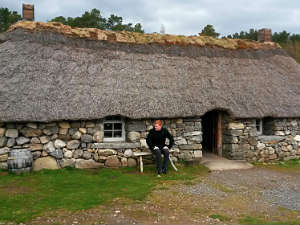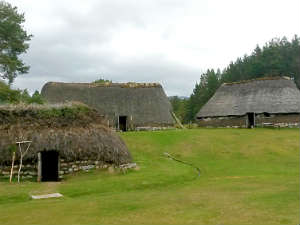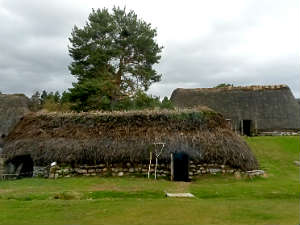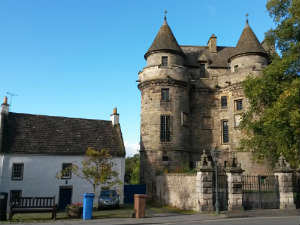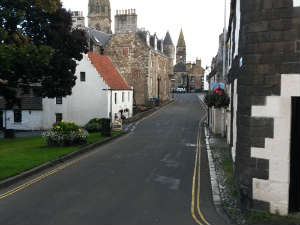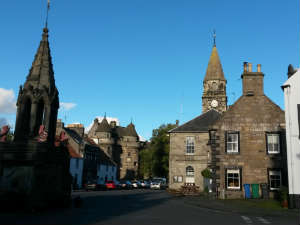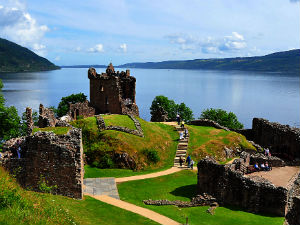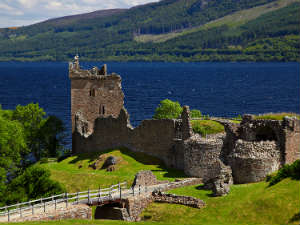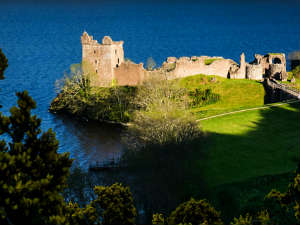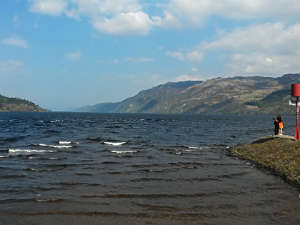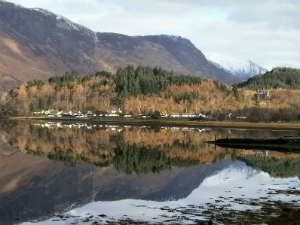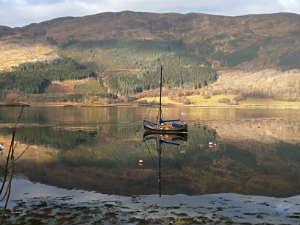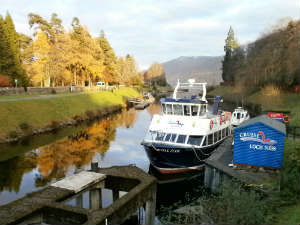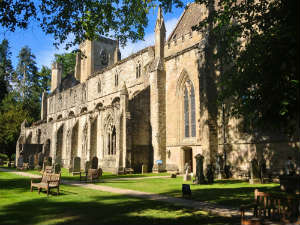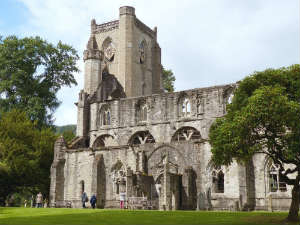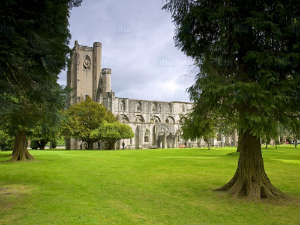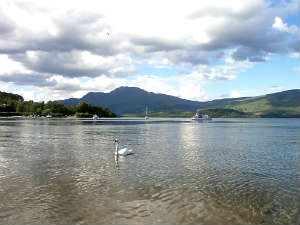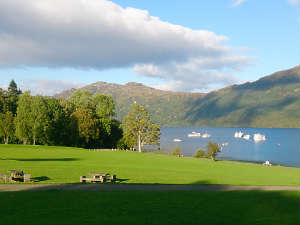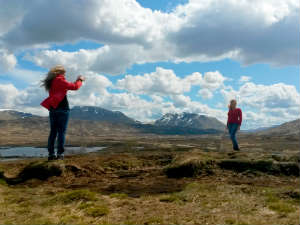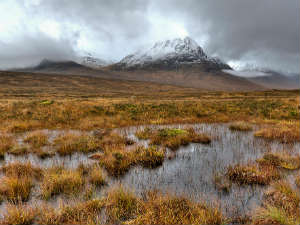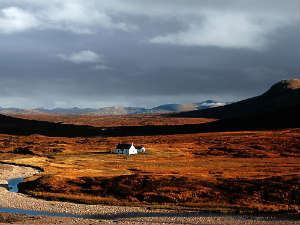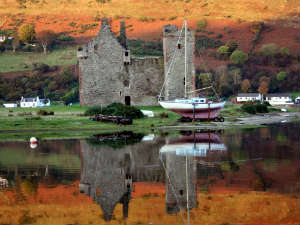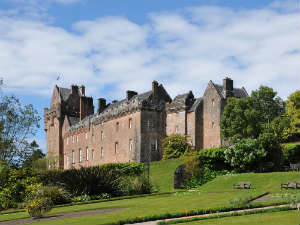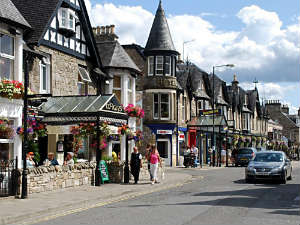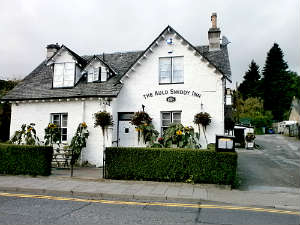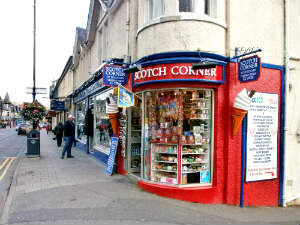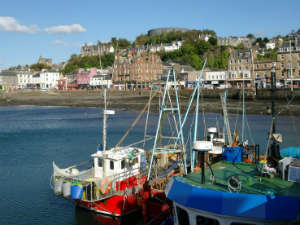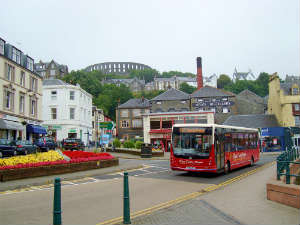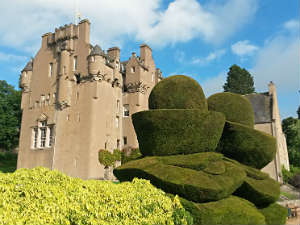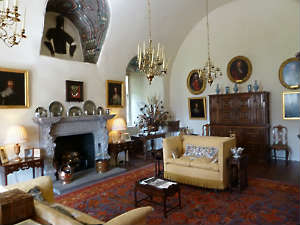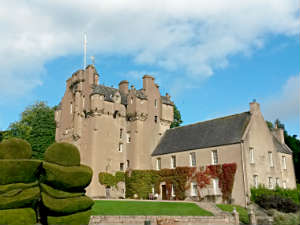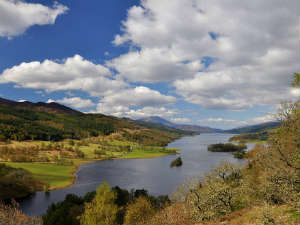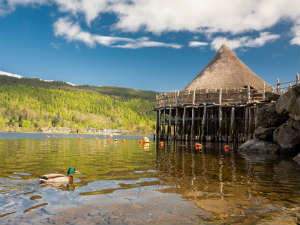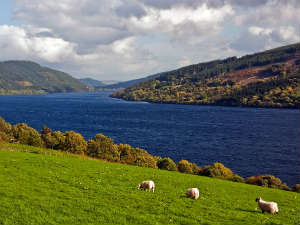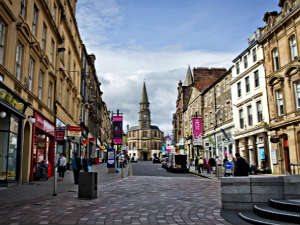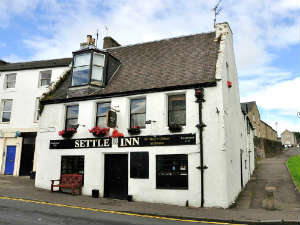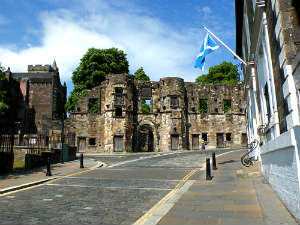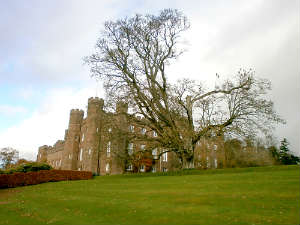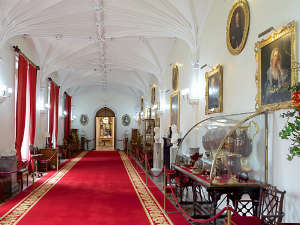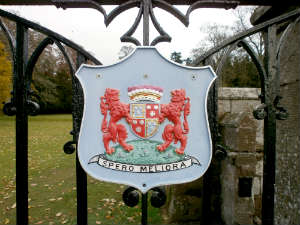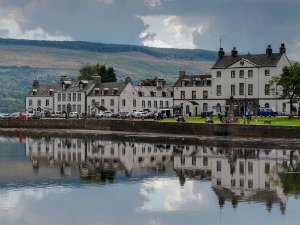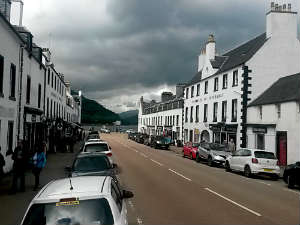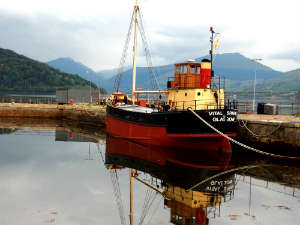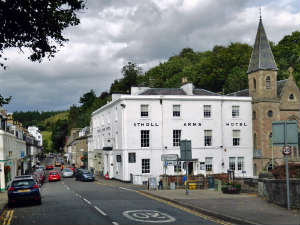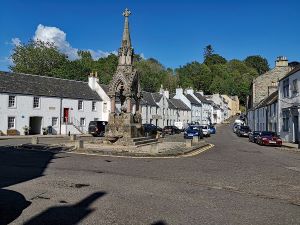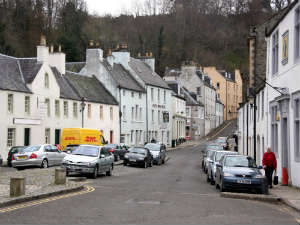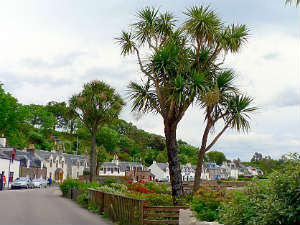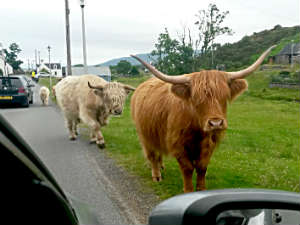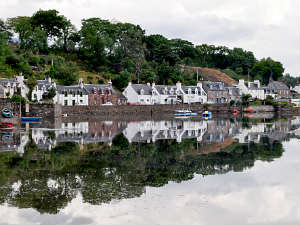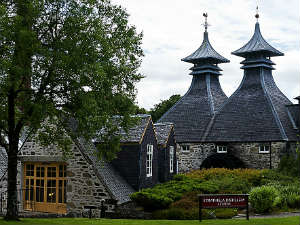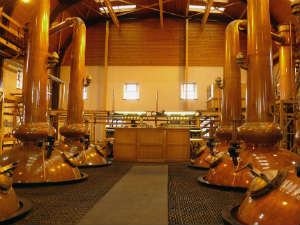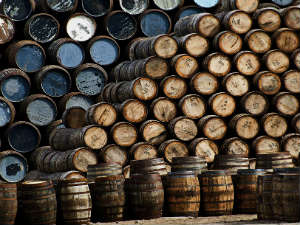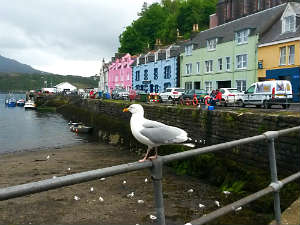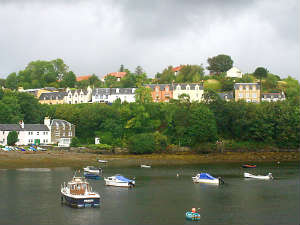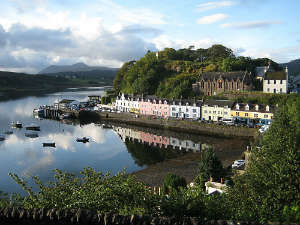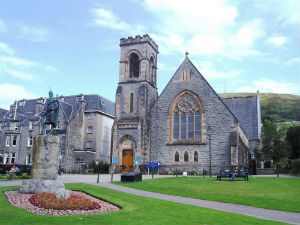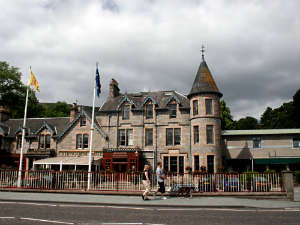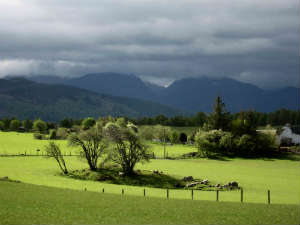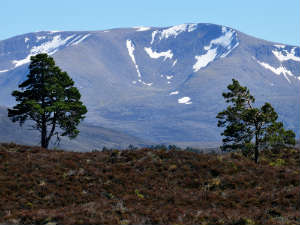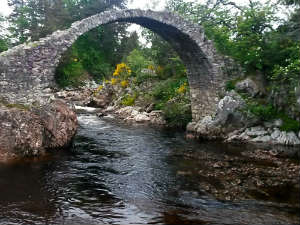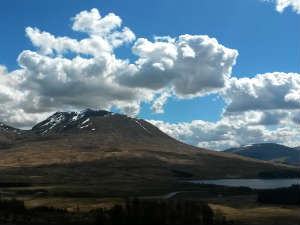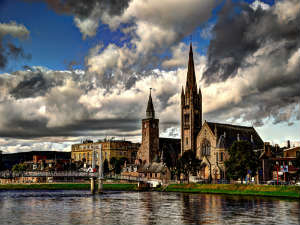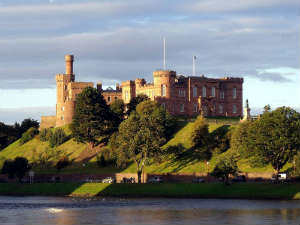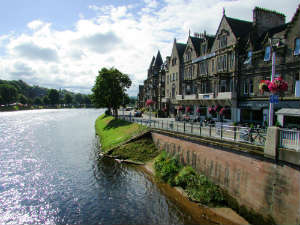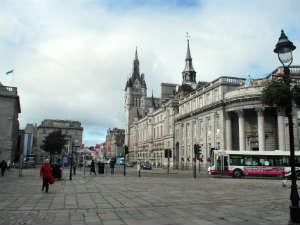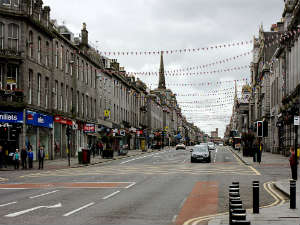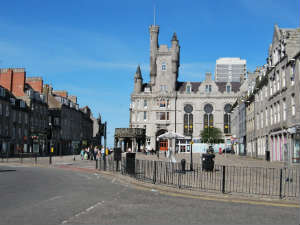The Best Attractions in Scotland.
What are the best attractions to visit in Scotland? To help you plan your perfect tour of Scotland, we have compiled a list of the best attractions based on the ratings and reviews of hundreds of tourists who have experienced them first-hand.
On this page, you will find descriptions and photos of castles, landmarks, and stunning natural spots frequently featured in tour descriptions featured on this website.
These are places that definitely deserve your attention.
Let's begin with a rundown of the top 15 most captivating attractions in Scotland.
Top Attractions in Scotland as Rated by Tourists.
1. Edinburgh
2. The Isle of Skye
3. Glencoe
4. St Andrew's
5. Glamis Castle
6. Trossachs National Park
7. Stirling Caslte
8. Torridon
9. Dunrobin Casltle
10. Blair Castle
11. Glasgow
12. Inveraray Castle
13. Dunnottar Castle
14. Glenfinnan Viaduct
15. Eilean Donan Castle
16. Applecross
17. Dalwhinnie Distillery
18. Kilchurn Castle
19. Highland Folk Museum
20. Falkland
21. Urguhart Castle
22. The Great Glen
23. Fort Augustus
24. Dunkeld Cathedral
25. Loch Lomond
26. Rannoch Moor
27. The Isle of Arran
28. Pitlochry
29. Oban
30. Crathes Castle
31. Loch Tay
32. Stirling
33. Scone Palace
34. Inveraray
35. Dunkeld
36. Plockton
37. Speyside
38. Portree
39. Fort William
40. Aviemore
41. Cairngorms National Park
42. Inverness
43. Aberdeen
1. Edinburgh.
You will find more details about the attractions and tours in Edinburgh HERE.
2. The Isle of Skye.
The Isle of Skye is so incredibly beautiful and diverse that you can keep coming back to it, and you'll never stop being amazed by its unique natural wonders, stunning seascapes, and the massive basalt columns with the poetic name "Old Man of Storr."
Skye is made up of four peninsulas, and if you look at it on a map, it resembles a giant butterfly. Each of these peninsulas has its own distinct beauty - one boasts 20 mountains that soar to nearly 1000 meters, another features dramatic 100-meter cliffs from which waterfalls cascade into the sea, and yet another holds the Quiraing pass, offering breathtaking landscapes.
And when you add charming villages, boat trips to see a colony of seals, fantastic dining options, and the renowned Talisker whisky distillery to this mix, you'll discover it's simply the ideal place for a getaway.
3. Glencoe.
Scotland is home to many gorgeous gens (valleys), each with its own distinct character. But Glencoe stands out as one of the most spectacular natural wonders in the country.
Your journey begins by traversing the endless expanses of heather-covered Rannoch Moor. Then, on the horizon, the imposing Buachaille Etive Mòr emerges, resembling a colossal pyramid, standing guard at the entrance to the valley. Once within the valley itself, you'll find dark and majestic mountains on both sides of the road, offering captivating views in every direction. Waterfalls, mountain streams, and lakes reflecting emerald-hued hills complete this enchanting panorama.
And of course, you won’t be alone. There will be plenty of tourists stopping along the road, snapping pictures of everything they see!
4. St Andrew's.
St. Andrews is a charming university town nestled along Scotland's east coast, where you'll find an intriguing blend of a wide sandy beach, narrow medieval streets, and the majestic ruins of St Andrew's Cathedral right by the sea.
Adding to its charm are the remnants of a fortress perched dramatically on a cliff and the world's oldest golf course, which lies just next to the beach. For more than three centuries, golfers have enjoyed rounds of golf on the lush green fairways.
If you are a golf fan, you can play or watch a game at The Old Course, which is considered the birthplace of golf and has hosted the Open Championship 29 times, more than any other venue.
This town's historical importance is profound, having once served as a spiritual epicenter for Scotland. St. Andrews, once a spiritual hub of Scotland, is also home to its oldest university in Scotland, where even Prince William received his education.
After a leisurely walk around town, it's a pleasure to dine in one of the excellent restaurants with sea views, indulging in the freshest seafood, including mussels, oysters, and the catch of the day.
5. Glamis Castle.
Glamis Castle is a grand and quintessentially Scottish castle, standing tall and proud in the Scottish baronial style. It features walls adorned with battlements and numerous turrets crowned with conical roofs.
If you're in Scotland for the first time and have the opportunity to visit only one castle, I would recommend Glamis. It's conveniently located not far from Edinburgh, and within its walls, you'll encounter a wealth of captivating elements - a rich history, well-preserved interiors spanning from the medieval era to the opulent 19th century, hidden chambers, and, of course, a handful of ghostly tales and legends that have woven an air of mystery around the castle for centuries.
Glamis Castle is the official residence of the 19th Earl of Strathmore and Kinghorne, and that's why even the part of the castle open to visitors (from April to the end of October) feels more like a somewhat eerie yet comfortably lived-in place rather than a dusty museum.
6. Trossachs National Park.
The Trossachs National Park is sometimes referred to as the "Scottish Highlands in miniature," and if you have just one day to explore Scotland's natural beauty, then the Trossachs National Park is the perfect choice.
Located just an hour's drive from Edinburgh, you'll find hills covered in ancient forests and heather, valleys with beautiful lochs, ancient castles, the Deanston whisky distillery, picturesque villages, and the famous Loch Katrine, made famous in the novels of Sir Walter Scott.
A delightful aspect of exploring the incredibly beautiful Loch Katrine is taking a ride on the historic steamship known as the "Sir Walter Scott."
7. Stirling Castle.
Stirling Castle is one of the most captivating castles in Scotland, bears a resemblance to Edinburgh Castle. It's perched on a massive basalt rock, surrounded on three sides by imposing 75-meter cliffs.
Over the centuries, Stirling Castle has seen many renovations, resulting in a delightful mix of beautifully restored medieval structures, lush green lawns adorned with colourful flowerbeds, hidden staircases, quiet nooks, and even somber casemates.
To thoroughly explore the entire castle, complete with its artillery emplacements, embrasures, museums, medieval kitchens, tapestries, and of course, the breathtaking views, you'll want to set aside several hours. And let's not forget the charming costumed guides who are more than happy to answer any questions you might have.
Stirling Castle boasts a truly intriguing history. While most other castles in Scotland are associated with the aristocratic families who once resided there, Stirling Castle is inextricably tied to the history of all of Scotland, featuring important historical figures and bearing witness to bloody battles fought at its walls.
8. Torridon.
Torridon is an incredibly beautiful region in the northwest of Scotland, secluded from civilisation, remote, uninhabited, with astonishingly picturesque northern landscapes of sea lochs, small lakes, sheep, and highland cows grazing amidst heather.
This remote region of Scotland is also home to the highest waterfalls, biggest sea cliffs and the most unusual and spectacular mountains in Britain.
Even in the height of the tourist season, you won't spot tour buses here. A narrow road winds along the azure sea inlets, through pine forests, climbs up the mountains offering views of the Atlantic and distant islands, occasionally passing lonely farmhouses and one or two villages.
9. Dunrobin Castle.
The most "fairytale-like" of Scottish castles, Dunrobin Castle is adorned with tall walls and turrets topped by beautiful conical roofs, giving the castle the appearance of a French château. The layout of the park near the castle's walls resembles the gardens of the Palace of Versailles.
Perched on a high cliff above the North Sea, Dunrobin is surrounded by meticulously landscaped gardens, and the most picturesque view of the castle can be seen from this wind-swept coastal park.
Of the castle's 189 rooms, only 17 are open to visitors, but that is enough to get a glimpse of the lavish lifestyle of the Sutherland family, prominent landowners of the 19th century.
A stroll through the well-kept gardens provides a refreshing contrast after exploring the castle's dark medieval chambers at Dunrobin.
10. Blair Castle.
A snow-white castle nestled in a valley amidst emerald-green hills. A long avenue lined with centuries-old linden trees leads to the castle, and along the avenue, you'll spot Highland cows grazing. Near the castle, visitors are greeted by almost tame peacocks.
Every hour a bagpiper comes out of the castle and the valley is filled with the sounds of bagpipes. From the parking area, a trail leads to the castle, passing alongside 60-meter-tall spruce and pine trees, then crossing a bridge over a fast-flowing mountain stream before arriving at the castle itself.
Inside the castle, visitors are welcomed by an impressive collection of weaponry. Approximately 30 rooms on three floors are open to visitors. Unlike other castles in Scotland, no one has lived in Blair Castle for quite some time, and it is gradually transforming into a rather fascinating museum.
11. Glasgow.
Glasgow, once an industrial powerhouse, has undergone a remarkable transformation in the last 20-30 years, evolving into a modern city with a vibrant character while still retaining the Victorian-era charm.
Glasgow stands out distinctly from Edinburgh with its lively pace of life, the colourful personalities of its residents, a wide variety of architectural styles, and a thriving cultural scene.
Many tourists are drawn to Glasgow's unique and hedonistic nightlife, which boasts numerous bars and clubs featuring live music. When it comes to shopping and retail therapy, Glasgow's offerings are second only to London in terms of quality.
Without a doubt, Glasgow is a vibrant cultural hub in Scotland that is well worth exploring.
Here's just some of the best attractions in Glasgow:
- The Kelvingrove Art Gallery and Museum is a treasure trove of art and history, housing everything from renowned masterpieces to ancient artifacts.
- The Glasgow Science Centre offers interactive exhibits and a planetarium, making it a hit with both kids and adults.
- For those intrigued by Scotland's shipbuilding legacy, the Riverside Museum showcases an impressive collection of historic vehicles, including the iconic Tall Ship moored on the River Clyde.
- Don't miss the inspiring Glasgow Cathedral, an architectural masterpiece dating back to the 12th century.
12. Inveraray Castle.
Nestled at the base of a lush green hill, overlooking a tranquil sea loch, lies the magical Inveraray Castle – the ancestral residence of the Dukes of Argyll.
Inveraray Castle is a relatively young structure, its construction beginning in 1745 under the direction of the 3rd Duke. Today, the castle is home to the 13th Duke of Argyll and his family.
From early April to late October, visitors can explore half of the castle, which includes an elegant dining room, a spacious drawing room, a music room, and an impressive collection of authentic weaponry supplied by the government to the Clan Campbell for suppressing Jacobite uprisings.
Despite its initial purpose as a grand residence designed by an architect to entertain guests and showcase the owner's wealth, Inveraray Castle retains all the characteristics of an authentic castle, complete with a modest moat, battlemented walls, and robust circular towers that subtly allude to its martial history.
13. Dunnottar Castle.
The most beautiful, and somewhat eerie, ruins of Dunnottar Castle with a chilling history are perched atop a cliff with 50-meter rocky cliffs.
The ruins of Dunnottar Castle look incredibly impressive from a distance, and from within the castle, you're treated to breathtaking views of the North Sea and the rugged coastline with sandy beaches. The castle ruins are swept by the salty sea breeze, and seagulls soar overhead.
Visiting the castle is like a small adventure - to reach the gloomy ruins with their terrifying history, you first need to descend along a narrow path to the base of the cliff, and then climb up a steep slope to the medieval gates, where a stern local lass will collect 10 pounds from you for entry.
14. Glenfinnan Viaduct.
The Glenfinnan Viaduct gained worldwide recognition due to its prominent role in the "Harry Potter" film series. In the movies, the iconic "Hogwarts Express" steams across this magnificent viaduct as it winds its way through the enchanting and snow-clad mountainous terrain.
This spot has become a pilgrimage for legions of Harry Potter fans who flock here to witness the real-life magic of the viaduct. However, the charm of this location extends far beyond cinematic fame. It's set amidst a landscape so stunning that it demands more than just a passing glance.
Take a moment to pause and ascend a small hill nearby. From this vantage point, you can savour the breathtaking vistas of the viaduct itself, with its arching curves gracefully stretching into the distance.
Beyond, you'll be treated to the majestic sight of the rugged mountains, their peaks often dusted with snow, and the narrow sea loch that winds through this picturesque landscape, creating a scene of captivating natural beauty that rivals any movie magic.
15. Eileand Donan Castle.
One of the most famous castles in Scotland, you could even say a symbol of Scotland, Eilean Donan Castle, is actually quite small. Like most castles in Scotland, it is situated in a picturesque and strategically vital location on a small island where three narrow sea lochs meet. A narrow stone arched bridge leads to the gray, jagged tower of the castle.
Despite its small size, the castle has a rich and fascinating history that spans over eight centuries. Inside the castle, you can discover how life was like for the lords and ladies, soldiers and servants, who lived and worked there.
Across three floors connected by narrow spiral staircases, you'll find former soldiers' quarters, a grand hall with a massive fireplace, guest bedrooms, and kitchens. Particularly intriguing is the small room with a "secret" adjacent to the grand hall, which houses a collection of weaponry and portraits of the castle's owners.
16. Applecross.
The village of Applecross consists of just a single row of closely nestled, small, and humble cottages that were once inhabited by fishermen. Even in modern times, Applecross remains in a rather remote location.
Applecross is not easy to reach, as it lies at the end of a narrow and winding road that crosses the highest pass in Scotland, Bealach na Bà. This road is a challenge for any driver, but also a reward for those who dare to take it, as it offers spectacular views of the mountains and the sea. Bealach na Bà means ‘pass of the cattle’ in Scottish Gaelic, as it was historically used by drovers to move their livestock across the peninsula.
In the village, there is an excellent pub that serves fresh seafood and offers a wide selection of local dishes. It's a delightful experience to dine on the outdoor terrace under the open sky, as it overlooks the bay and the islands of Raasay and Skye. On a clear day, you might even catch a glimpse of the Cuillin hills on Skye, or the Old Man of Storr.
17. Dalwhinnie.
Dalwhinnie is one of the most fascinating whisky distilleries to visit in Scotland, not only for its exquisite single malt whisky, but also for its history and location. The white distillery buildings with traditional copper pagoda roofs are situated in a picturesque location within the Cairngorms National Park, amidst heather-covered hills.
The distillery is situated in the Highland village of Dalwhinnie, which means ‘meeting place’ in Gaelic, referring to the junction of ancient cattle drovers’ routes through the mountains.
A particular highlight is the exceptionally well-organized distillery tour and whisky tasting, which is accompanied by chocolate. The distillery offers a variety of tours and tastings, but the most popular one is the Dalwhinnie and Chocolate Tasting Tour. Each type of whisky has been paired with a specially crafted chocolate to complement its flavour profile. This thoughtful pairing enhances the whisky's taste, and in turn, the whisky brings out the nuances of the chocolate.
At the Dalwhinnie distillery, there is a small shop where you can purchase collectible whisky varieties.
18. Kilchurn Castle.
Kilchurn Castle is a stunning ruin on the edge of Loch Awe. It was built by the Campbells of Glenorchy, a powerful clan that ruled the Highlands for centuries.
The ruins of the castle are often regarded as the most romantic and the most photographed in Scotland. Kilchurn Castle is especially enchanting when mist gently descends from the surrounding heather-covered hills and shrouds the gray castle walls.
From the parking area, a path leads to the shores of Loch Awe, where sheep graze alongside it. The most breathtaking view of the castle is from the lake's edge, where you can see the reflection of the ancient ruins on the water's surface.
The castle ruins are open to visitors, and admission (for now) is free.
19. Highland Folk Museum.
For Scotland, renowned for its castles, fortresses, palaces, cathedrals, and abbey ruins, the ethnographic museum is a truly unique and captivating attraction.
In Scotland, many castles and palaces have been preserved, offering glimpses into the lives and conditions of the Scottish aristocracy, past and present. However, very little remains of the ancient Highlanders' dwellings, and our knowledge of their way of life largely comes from books and the TV series "Outlander."
It's far more engaging to explore this facet of Scotland's history at the ethnographic museum, where homes of common people, farms, schools, and even an entire 17th-century village have been meticulously gathered from across Scotland.
The village has been painstakingly reconstructed in a pine grove, complete with every detail of daily life. In the low, thatched-roof houses with earthen floors, peat fires burn, and the surroundings are adorned with tools, utensils, and period-appropriate attire.
Knowledgeable guides in costume will share with you insights into the Highlanders' way of life, adding depth and authenticity to this immersive experience.
20. Falkland.
A walk around the village of Falkland will take you no more than half an hour - the village is small, but very atmospheric and picturesque, with an ancient square in the centre, narrow streets of the 17th-18th centuries and tiny souvenir shops, pubs and cafes. You can stroll around the cobbled square, where you can admire the old fountain, the mercat cross, and the town hall.
But the main attraction of Falkland is the magnificent Falkland Palace, which was once the favourite residence of the Stuart monarchs. The palace is a splendid example of Renaissance architecture, with elegant rooms, ornate ceilings, and fine furniture. You can also see the famous Royal Tennis Court, which is the oldest surviving real tennis court in the world.
Falkland is a tourist village, but there are rarely many tourists there - it is an ideal place to see the unhurried life of the Scottish countryside in all its beauty and of course to visit Falkland Castle, the former hunting estate of the Scottish kings.
21. Urquhart Castle.
Urquhart Castle is a place where history and legend come alive. It is a majestic ruin that stands on the banks of Loch Ness, the most mysterious and enchanting lake in Scotland.
The castle was built in the 13th century by the Durward family, who wanted to control the Great Glen, a natural route that connects the east and west coasts of Scotland. The castle was a witness to many wars and conflicts, as different clans and kings fought for its possession.
It was also a target for raids and sieges, as the English and the MacDonalds tried to capture it. The castle was finally blown up by its own defenders in 1692, to prevent it from falling into the hands of the Jacobites.
Now it is a picturesque ruin of gates, towers and fortress walls scattered on the green hills above Loch Ness - a great place to admire the views of Loch Ness, climb the half-destroyed towers or just sit and soak up the unique atmosphere of ancient ruins on the shore of the most beautiful and famous lake in Scotland.
It should be noted that most of the photos of the Loch Ness monster were taken in the vicinity of Urquhart Castle where the depth of the lake reaches 250 meters.
22. The Great Glen.
The Great Glen, stretching for 100 kilometers, traverses all of Scotland from the Atlantic coast to the North Sea. It is a stunning valley that cuts across Scotland from coast to coast, following a geological fault line that formed millions of years ago.
Within the Glen, a chain of three beautiful lakes and one sea loch extends, including the famous Loch Ness, Loch Oich, Loch Lochy, and Loch Linnhe. All these lakes are remarkably narrow, long, and deep, their vast waters filling the geological fault where two continents meet.
In the westernmost part of the Great Glen lies the town of Fort William, and here you'll find the highest mountain in the United Kingdom. In the easternmost part stands Inverness, often called the capital of the Highlands.
All the lakes are connected by the Caledonian Canal, featuring 29 locks and spanning 97 kilometers. In the Great Glen, or as the Scots call it, "Glen Mor," there are numerous attractions, castle ruins, picturesque villages, and simply beautiful places to stop and savour the natural beauty and history of this remarkable region.
23. Fort Augustus.
The tiny village in the Great Glen - Fort Augustus - is located on the far western shore of Loch Ness.
In such a small village, there are more than enough attractions to captivate visitors.
It offers some of the most beautiful views of Loch Ness (locals claim that you're practically guaranteed to spot the Loch Ness Monster here), six locks of the Caledonian Canal, boat trips on Loch Ness, both by motorboat or cruiser, several pubs, and souvenir shops.
On a pleasant day, you can enjoy the beautiful views of Loch Ness, the largest and deepest freshwater lake in Britain. Or you can sit with a pint of beer by the Caledonian Canal and watch as boats and yachts navigate through the cascade of locks on the Canal - an engineering marvel that connects the east and west coasts of Scotland.
It's an excellent place for a lunch break, boat trips on Loch Ness, or an overnight stay during a multi-day tour of Scotland.
24. Dunkeld Cathedral.
Dunkeld Cathedral - The somber Gothic ruins of the cathedral are situated in an astonishingly picturesque location on the banks of the mountainous River Tay, amidst ancient trees and neatly trimmed green lawns. The place where the cathedral stands was considered sacred long before the cathedral was built.
It was built on the site of an ancient monastery that was founded by Saint Columba in the sixth or seventh century. The monastery was a centre of Celtic Christianity and held the relics of Saint Columba until the Reformation.
The cathedral comprises two parts - the 14th-century ruins and the restored 16th-century section. In the restored section, you'll find an ordinary village church with a small museum where you can explore some interesting exhibits. Afterward, you can admire the older, semi-ruined part of the cathedral.
25. Loch Lomond.
Loch Lomond is located in a place where the Highlands begin and where the southernmost of Scotland's Munros, Ben Lomond, rises above the lake.
Loch Lomond is the largest and most beautiful lake in Scotland, stretching for 38 km and surrounded by majestic mountains, including Ben Lomond, the most southerly Munro (a mountain over 1000 meters).
Loch Lomond is Scotland's largest lake, stretching approximately 38 km in length and reaching 8 km at its widest point.
Scattered across the lake are 37 islands, some so small that only a handful of Scots pines grow on them. The eastern shore of the lake is particularly captivating, with picturesque, uninhabited beaches and unspoiled wilderness.
Along the lake's shores, you'll find several charming villages worth exploring - such as Balloch, Luss, or Balmaha, a handful of excellent hotels, restaurants, and simply lovely spots for leisurely walks.
26. Rannoch Moor.
Rannoch Moor is a place that defies expectations, that surprises and awes visitors with its unique and mysterious atmosphere.
Imagine a place where the horizon is endless, where the land is a patchwork of swampy hills, purple heather, shimmering lakes, and dark peat. A place where the only sound is the wind howling through the stunted trees, and the only sight is the misty fog that envelops everything. This is Rannoch Moor, one of the most stunning and wild natural places in Scotland.
During our tours of Scotland, we usually drive through a small section of Rannoch Moor, where you can experience this amazing place for yourself. You can stop at a scenic spot, climb a gentle hill, and admire the panoramic view of this ancient and untouched landscape. You will feel like you have stepped into another world, a world of magic and mystery.
27. Isle of Arran.
On this small but incredibly beautiful emerald-green island with its majestic mountain, you'll find everything: Brodick Castle with its exquisite park, a whisky distillery, a brewery, picturesque coastal villages, beaches, a mountain (Goat Fell, 874 meters), hills covered with heather and a variety of landscapes and sea views.
The uninhabited northern part of the island, with its heather-covered hills and towering mountain, belongs to the highlands, while the southern portion, with its fertile lands and villages where most of the island's population resides, is considered lowlands. This is why Arran is often referred to as "Scotland in miniature."
Ferries to the island depart from a port just an hour's drive from the city of Glasgow, making Arran an excellent choice for a day trip from Glasgow
28. Pitlochry.
Pitlochry is a charming Scottish village that seems to have come straight out of a fairy tale. A village where the main street is lined with quaint souvenir shops, cozy cafes and lively pubs that serve mouth-watering local dishes. A village where you can feel the warmth and hospitality of the people, and the history and culture of the land. Even in the peak tourist season, you will not feel overwhelmed by crowds or noise.
Pitlochry has several very good hotels that make this village very attractive for overnight stays during multi-day tours of Scotland. You can find a comfortable and affordable accommodation that suits your taste and budget. You can also indulge yourself in a luxurious spa treatment or a fine dining experience.
If you are a whisky lover, you will be delighted to know that Pitlochry has two whisky distilleries: Edradour and Blair Athol. You can visit them and learn about the history and process of making whisky. You can also taste some of the finest whiskies in Scotland, and buy some bottles as souvenirs.
29. Oban.
Oban is a small town on the west coast of Scotland, where the green hills embrace the small harbor like an amphitheater. Oban is a place where you can enjoy the beauty and tranquility of nature, as well as the lively and vibrant culture of the people.
The centre of Oban is full of charm and character, with a few pleasant streets and a waterfront that offer stunning views of the harbor and the sea. You can watch the yachts and fishing boats come and go, or spot the seals and distant islands on the horizon. You can also stroll along the shops, cafes, and pubs that line the waterfront, and sample some of the local delicacies, such as seafood, cheese, or chocolate.
Oban is home to one of the oldest and most famous whisky distilleries in Scotland. The Oban distillery is located in the heart of the town, and offers tours and tastings of its fine single malt whisky. You can learn about the history and process of making whisky, and savour the smooth and rich flavor of Oban whisky.
30. Crathes Castle.
One of the few castles in Scotland that has retained its unaltered form since the 16th century, it consists of a four-story tower with walls about 2 meters thick. Within the tower's several floors, you'll discover tiny rooms with chests, canopied beds, a collection of weaponry, ancestral portraits, an array of family heirlooms, and intricately painted ceilings dating back to 1602.
While most castles in Scotland have undergone multiple renovations and expansions, it appears that the Barnett family, who owned the castle for 400 years, likely didn't have the means to enlarge it. It was only during the time of the 3rd Baronet, Sir Thomas Barnett, who had 21 children, that an extension was added to the castle to accommodate their growing family.
The castle is situated within a splendid park, and opposite it, there lies a beautiful garden with meticulously manicured lawns and a living hedge that has been trimmed into whimsical shapes for centuries. The combination of the ancient castle with its turrets, the historic park, and the fanciful figures of the living hedge creates a remarkably romantic and charming scene.
31. Loch Tay.
Loch Tay is a narrow lake about 25 kilometers long, nestled among the rugged mountains in the Scottish Highlands with two picturesque villages at each end.
Through the village of Killin at the western end of the lake flows a fast mountain river with very beautiful rapids - Falls of Dorchart, and opposite this scenic place is a colourful pub with a huge fireplace and delicious food.
At the other end of Loch Tay is the village of Kenmore where there is an excellent restaurant with a summer terrace and views of the lake and a small island almost completely overgrown with tall pines.
The main attraction of Loch Tay is the restored in all details house of the Bronze Age on stilts in the water. A rickety wooden bridge leads to the house, and inside the house with a conical roof covered with reeds. Inside, you will see a peat fire burning and hear stories from guides about how people lived in such houses 2500 years ago.
32. Stirling.
Nestled in the heart of Scotland, only an hour away from Edinburgh by car, lies the city of Stirling. This city is built on a volcanic rock that rises above the surrounding plain, and is crowned by the magnificent Stirling Castle.
Most tourists limit themselves to visiting the castle, although the city itself is no less interesting. Narrow paved streets on steep slopes of the hill, well-preserved houses that date back to different period - medieval, Georgian and Victorian. All this is very reminiscent of Edinburgh, only in a more compact, miniature version.
In the city of Stirling there are much fewer tourists than in other tourist places - here you can enjoy the relaxed atmosphere of a small town. You can sit in a cafe and watch the locals go about their daily lives, or visit the Stirling castle or the impressive monument of William Wallace, the Scottish hero who fought for freedom.
33. Scone Palace.
Scone Palace may not strike the same imposing impression as other Scottish castles, although it is considered a masterpiece of Georgian Gothic architecture, nestled within a vast park with centuries-old trees.
Inside the castle, you'll encounter interiors decorated with antique furniture, tapestries, paintings, statues, and family heirlooms. Everything inside the palace looks lived-in and even cozy, not like a dusty museum, but as if the current owner of the castle, Alexander David Mungo Murray, 9th Earl of Mansfield, has just stepped out and will return shortly.
Scone Palace is primarily renowned for its historical significance as the site where Scottish kings were crowned for over a thousand years and the former home of the famous Stone of Destiny. A replica of this stone now resides near a small chapel in the park, while the genuine Stone of Destiny is housed in Edinburgh Castle.
34. Inveraray.
Another tiny village in a picturesque location, nestled on the shores of Loch Fyne, Inveraray boasts just three streets, a charming pub, a neoclassical-style church, and a rather interesting prison museum where you can see all the charms of British justice system from the Middle Ages to the present day.
Inveraray sets itself apart from other Scottish villages with its unique architectural character. Here, all the houses are constructed in the Scottish Georgian style, adorned in pristine white, with windows and doorways in stark black.
But the crown jewel of Inveraray is undoubtedly its magnificent castle, a fairy-tale vision of turrets, towers, and gardens. This is the ancestral home of the Dukes of Argyll, the chiefs of Clan Campbell, and it is filled with treasures and stories that will enchant you.
35. Dunkeld.
As you walk along Dunkeld's quaint streets, you’ll see houses painted in pastel shades, roofs covered in black slate tiles, and a medieval square that transports you back in time.
The village of Dunkeld is situated on the banks of the fast-flowing River Tay, which divides the Scottish Highlands and Lowlands, marking the convergence of two distinct cultures. It was here, in 1689, that a battle unfolded between Jacobite Highlanders and government forces. You can still see the bullet holes in some of the buildings, a reminder of the bloodshed that occurred.
The main attraction in Dunkeld is the cathedral, which once served as the spiritual heart of Scotland and housed the remains of Saint Columba.
Dunkeld is a perfect place for a brief stopover – you can leisurely stroll along its quiet streets, browse through souvenir shops, visit a cozy pub for a pint of ale, and then proceed to explore the ruins of the cathedral on the banks of the River Tay.
36. Plockton.
If you’re looking for a quintessential Scottish village, look no further than Plockton, a picturesque hamlet on the shores of Loch Carron. Here, you’ll find charming fishing cottages, palm trees swaying in the breeze, and friendly locals who speak Gaelic.
Plockton is a place where you can get close to nature and enjoy the wildlife. You can join a boat tour with a charismatic skipper who will take you to see the seals basking on the rocks. You can also spot Highland cows wandering around the village, adding to its rustic charm.
Plockton is also a place where you can savour the flavors of Scotland. In the cozy pubs, where fireplaces keep you warm even in summer, you can sample some of the finest whiskey and local delicacies, such as fresh seafood and venison.
37. Speyside.
Far in the north of Scotland, where the Cairngorms National Park ends, flows a swift mountain river Spey, along which are located such famous distilleries as Macallan, Glenfiddich, The Glenlivet.
Speyside, often referred to as the "Golden Triangle of Whisky," is primarily renowned for housing over half of all Scotch whisky distilleries and producing a vast quantity of this beloved spirit.
At the heart of Speyside lies the town of Dufftown, which locals modestly dub the "world capital of single malt whisky." Here, you'll find nine distilleries, hosting whisky festivals featuring various attractions, the most famous of which is humorously named "get-home-safely."
Some distilleries look like unremarkable factories, others are located in beautiful places and look very picturesque - massive low-rise buildings with high roofs covered with slate and four-sided pagoda towers. The most charming and oldest (1786) distillery in Speyside is Strathisla.
38. Portree.
Portree is the capital of the Isle of Skye, population about two thousand people. A pretty little town with one central square and a few adjacent streets where everything interesting is located - a variety of shops selling unique local products, such as woolen sweaters, pottery, and whisky. You can also stop by one of the pubs or cafes and enjoy a hearty meal or a cup of coffee.
The most attractive place in Portree is the picturesque harbor surrounded by hills. Here, you can see houses painted in bright hues, fishing boats bobbing on the water, seagulls soaring in the sky, and tourists snapping photos. You can also watch the fishermen unload their fresh catch, which you might taste later in one of the restaurants.
39. Fort William.
Fort William is small town nestled between the highest mountain in Scotland, Ben Nevis (1344m), and the narrow sea loch - Loch Linnhe.
One street along the sea loch, spanning several kilometers, is predominantly lined with small hotels and homely guesthouses. You’ll also discover a variety of pubs where you can enjoy a pint of ale and a chat with friendly locals.
At the town center, you'll find the railway station from which, twice daily (April-October), the Hogwarts Express or the "Harry Potter" train embarks on a scenic journey through renowned locations, including the iconic viaduct, en route to Mallaig port.
For those keen on ascending Ben Nevis, near the town of Fort William, there's a cable car that transports you to an altitude of 650 meters.
And if you’re a whisky lover, you can visit the Ben Nevis Distillery, named after the mountain it sits under. You can learn about the history and process of making whisky, and sample some of the finest products.
40. Aviemore.
Aviemore is located in the heart of the Cairngorms National Park, where you can enjoy a variety of outdoor activities, such as kayaking, rock climbing, skiing, and more.
Aviemore has a lively and friendly atmosphere, with a range of pubs, restaurants, cafes, and accommodations to suit your taste and budget. You can mingle with other travelers and locals, share your stories and tips, and have a great time.
While it may not be the most picturesque village, it exudes the vibrant atmosphere of a mountain sports resort, set in a stunning location. It's an excellent choice for an overnight stay during multi-day tours of Scotland.
41. Cairngorms National Park.
This is the largest mountain range and national park in Scotland and the United Kingdom, where endless heather-covered hills stretch from horizon to horizon. In the valleys, you can spot wild deer and grouse, while narrow mountain roads wind along the lakesides, leading from one charming village to another.
In Cairngorms National Park, there's an abundance of attractions to suit every taste. Whisky distilleries like Dalwhinnie, Glenlivet, Tomintoul, Royal Lochnagar, Balmenach, ancient castles including Braemar Castle, Corgarff Castle, and Blair Castle, and a diverse range of landscapes from arctic tundra in the high plateaus to alpine flora, while the valleys are home to pristine pine forests.
But perhaps the most famous attraction in Cairngorms National Park is Balmoral Castle, the King’s residence in Scotland. This is where the royal family spends their summer holidays, enjoying the tranquility and beauty of the park. You can visit the castle and its gardens, and learn about its history and significance.
42. Inverness.
By Scottish standards Inverness is a fairly sizable city, with a population of around 50,000 people. Running through the city center, you'll find the River Ness, which flows from Loch Ness to the sea. Along the river, there's a pleasant promenade perfect for leisurely strolls, and perched atop a small hill adorned with vibrant flowerbeds, the 19th-century restored castle looms over the city.
In the peaceful and tranquil city center, you'll discover excellent restaurants catering to a wide range of tastes, from seafood to local cuisine. Inverness is truly the Highlands' culinary gem, making it the ultimate destination for food enthusiasts.
In addition to its dining options, Inverness offers a wide selection of quality hotels and B&Bs, making it an excellent place for an overnight stay during multi-day tours of Scotland.
43. Aberdeen.
Scotland's third-largest city, Aberdeen is predominantly constructed from gray granite. For much of the year, the city appears to be a composition of 50 shades of gray, set against the backdrop of the low, gray sky and the shores of the gray North Sea.
However, during the summer months, the city bursts into vibrant life, transforming temporarily into a lively and dynamic place characterised by beautiful architecture, green parks, colourful flowerbeds, a captivating old town, fine dining establishments, and cozy pubs.
Aberdeen makes for a convenient one-night stop during multi-day tours along Scotland's eastern coast, allowing travelers to experience both its gray, stoic side and its lively, colorful charm.



